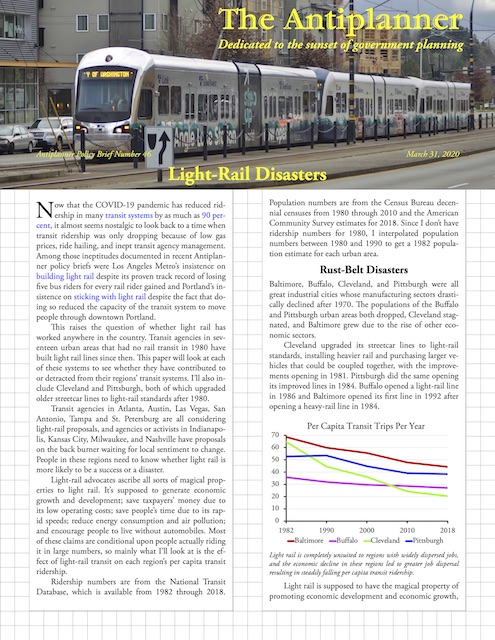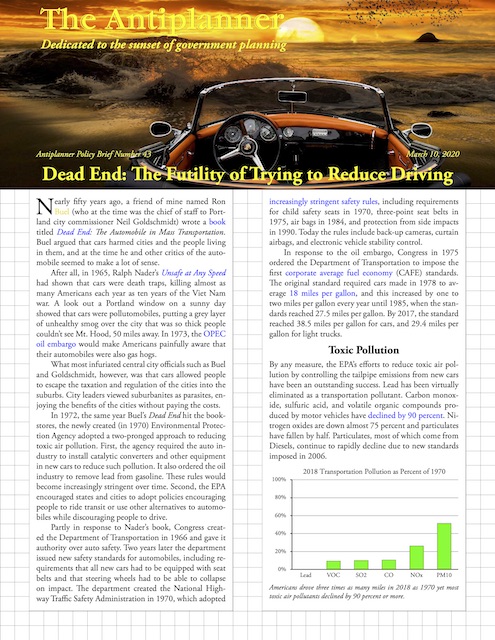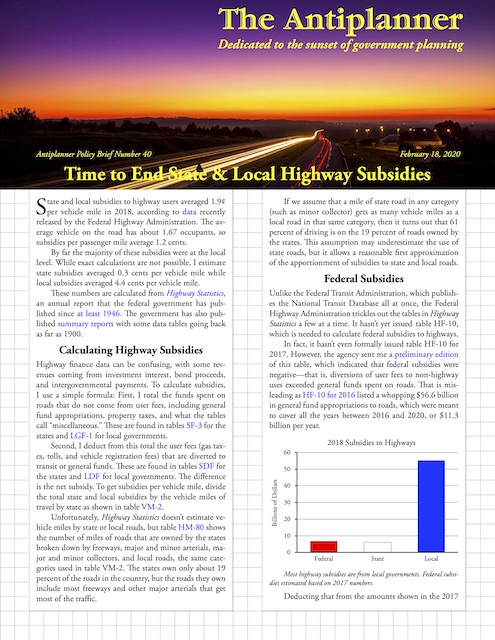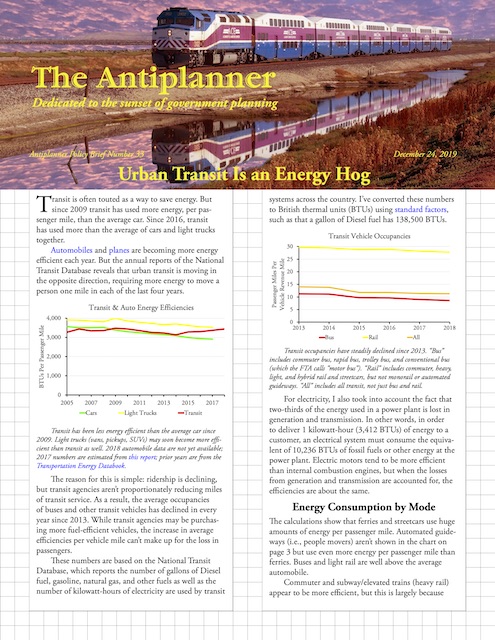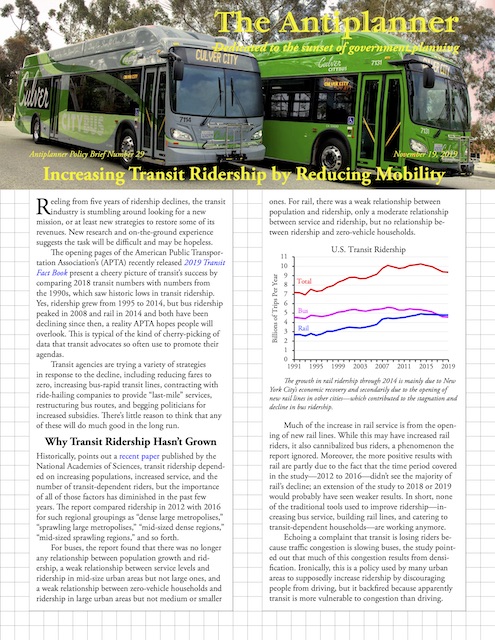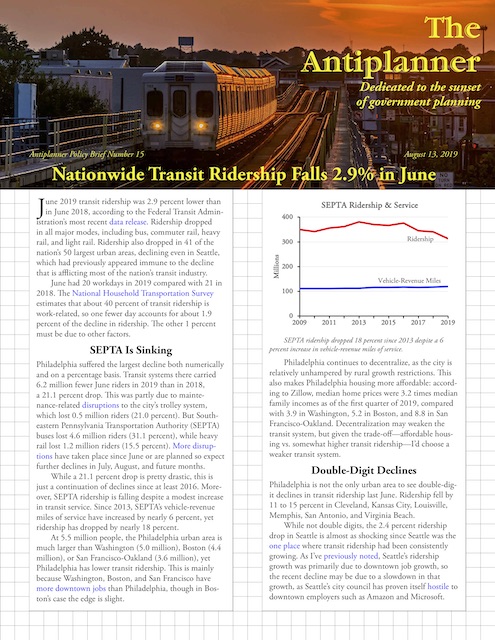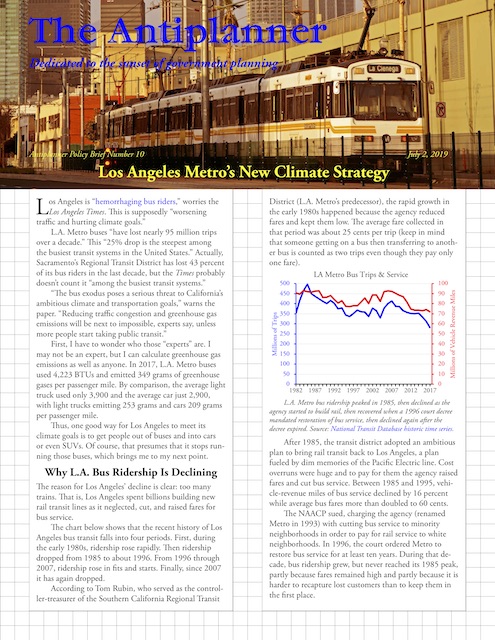Sixty years ago, America had the finest transportation system in the world, and it was almost all unsubsidized. Congress had subsidized the construction of some railroads, but that included only about 7 percent of the nation’s rail mileage. Congress had also subsidized the construction of some airports, but by 1960 that was near an end. Most of America’s highways had been built and maintained out of highway user fees such as gasoline taxes and tolls. The nation’s transit systems were mostly private and even the public ones funded their operating costs and many of their capital costs exclusively out of transit fares.
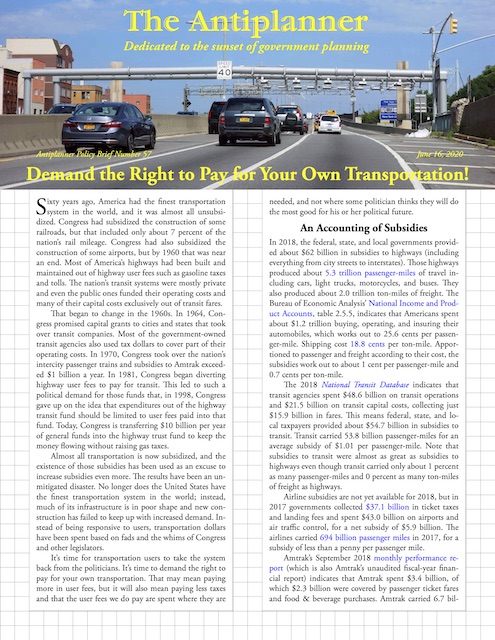 Click image to download a six-page PDF of this policy brief.
Click image to download a six-page PDF of this policy brief.
That began to change in the 1960s. In 1964, Congress promised capital grants to cities and states that took over transit companies. Most of the government-owned transit agencies also used tax dollars to cover part of their operating costs. In 1970, Congress took over the nation’s intercity passenger trains and subsidies to Amtrak exceeded $1 billion a year. In 1981, Congress began diverting highway user fees to pay for transit. This led to such a political demand for those funds that, in 1998, Congress gave up on the idea that expenditures out of the highway transit fund should be limited to user fees paid into that fund. Today, Congress is transferring $10 billion per year of general funds into the highway trust fund to keep the money flowing without raising gas taxes. Continue reading

